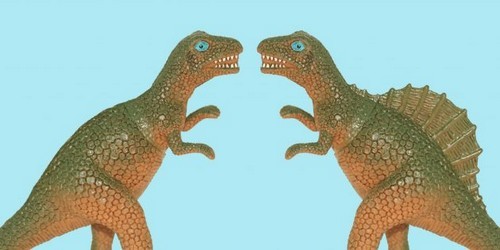International day of the orphan (rare) diseases is celebrated worldwide on the last day of February. Such diseases there are more than a thousand – every year, doctors-geneticists discover a new disease, and scientists, fortunately, are developing drugs that are needed by patients with rare diseases to live.
In the capital the care of patients with rare diseases have in the Morozov children’s city clinical hospital, where the Center of orphan and other rare diseases. Now in this medical institution can diagnose the disease and to appoint the little patients the necessary treatment. Natalia L.
Pechatnikov, head of the center for orphan diseases the Morozov hospital, the head of the Department of hereditary metabolic disorders says that the Department can simultaneously be screened or to get treatment for about 30 children.
Disease need to detect
Igor E. Koltunov, chief physician of the hospital, chief freelance specialist in Pediatrics Department of health of Moscow, says that to identify the most frequently occurring pathology is possible and necessary shortly after birth. In Russia the system works neonatal screening, in which all babies born, take capillary blood samples. Blood on special forms sent to the clinical diagnostic laboratory. There is such Morozov, and the hospital receives samples from all Metropolitan hospitals.
Head of the laboratory Artem Bully explains that this year the city is holding a screening for 11 diseases of metabolism. The list was expanded from 1 January 2018 and for the five diseases, which are detected throughout the country, in Moscow, have added another six titles. In 2017 surveyed was approximately 129 thousand newborns in 140 of them as a result of screening was discovered those or other diseases. In that case, if the screening result is different from the norm, the laboratory staff contact parents, offer to repeat the analysis to confirm or refute the diagnosis.
One more direction of work of the laboratory, in addition to performing all standard tests selective screening, in which in order to diagnose hereditary diseases, examine patients at risk.
Therapy primarily
Early detection of such diseases is very important, because in this case, the treatment can begin in the very first days of a child’s life. Orphan diseases are different, are different and treatment: in some cases it is necessary to change the diet, in others it is vital to take medications, do special exercises to facilitate the patient’s condition.
Some orphan diseases occur most frequently. To those that explored better than others, and are more common include cystic fibrosis – the disease occurs in one out of 10,000. Depending on the mutations present in the genome of the patient, the disease can occur in different forms.
Maria A. Mukhin, a paediatrician working with children with cystic fibrosis, explained that every year the prognosis for patients with cystic fibrosis is getting better and better. The average age in Europe close to 60, and in Russia – 40. This is because there are always new medications and treatment approaches, the most innovative of which is the genetic therapy.
Currently, many children with cystic fibrosis are virtually the same lifestyle as their able-bodied peers. “Cystic fibrosis is not a disease, but a way of life,” – said Maria Alexeevna. Patients need regular inhalations, as needed – pancreatic drugs and antibiotics, as well as exercises that facilitate expectoration of sputum.
Less than the rest
Cystic fibrosis is included in the list of 24 orphan diseases, with which patients get the treatment they need free of charge. However, the treatment of orphan diseases at the Morozov hospital are children with rare disorders.
One of them is nine-year-old Juliana, which 1.5 years was diagnosed with the disease, Pompe, glycogen storage disease type II. Catherine, the mother of the hive, says that the disease is discovered by accident. In the design of voluntary health insurance policy was required to pass a series of tests, upon receipt of the results of which revealed that she had raised liver enzymes.
Each patient’s disease is different – in the hive a mild form, she gets tired faster than other children, but in General almost no different from their peers. Girl goes to regular school and almost the only difference from her classmates is that every two weeks she comes in the Morozov hospital for vital for her IVS.
Disease Ulyana quite rare – in the whole of Moscow there are only two patients with this diagnosis. The medicine that you need girl, it wasn’t registered in Russia, and the disease the Pump is still not included in the “list of 24”. Catherine says that the expensive drug had to be extracted with the help of the manufacturer, charity organizations and the Ministry of health. After the cure, for the child, registered in Russia, the drug for Uliana buys Moscow government.
Correctly prescribed treatment helps to improve the condition of those patients whose disease was detected through selective screening. Natalia Pechatnikov says that many such cases – many patients after disease diagnosis and therapy is now growing and developing according to their age and their condition does not cause the experts any questions. They, of course, have to abide by several limitations that are not always just as to the children themselves and their families.
Igor Koltunov said that science has stepped far forward – now comes the question of the establishment of a centre for orphan diseases for adults. A few years ago such a question was not, as children with rare diseases simply did not survive to adulthood.



